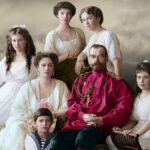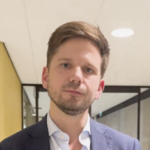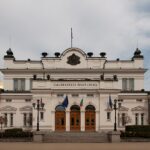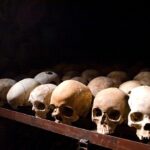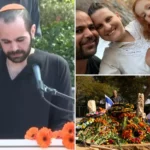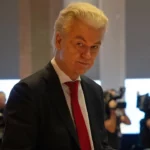Blog Post
Talking politics in St. Petersburg
By Jonathon Van Maren
Sometime in early afternoon, the cold rain falling on St. Petersburg turns into light snow as my friend and I head through the city with a twenty-two-year-old student, a young man who recently attained a degree in Russian contemporary studies from the St. Petersburg School of Higher Economics with a specialty in studying elections. Surveying the enormous busts of Marx and Engels outside the State University, my friend asks him if there’s any statues of Putin around. “Fortunately, no,” he laughs.
We arrived in Russia earlier this week—I have a series of research meetings in Moscow in a few days–and in the meantime, we set off to see the sights. As we drive, we grill our guide on what’s going in in Russia at the moment. “It’s not a new cold war,” he tells us. “But there is a new political reality, where speaking aggressively is part of the agenda.” He’s referring, of course, to Vladimir Putin’s latest comment referencing Russia’s new nuclear weapons. He’s never met Putin himself, but in the “rule of six handshakes”—which says you’re always six handshakes away from anyone on earth–he’s “one handshake away,” he says.
He points out the street where Putin grew up as we pass it, and later on, the ash-gray concrete building where Putin worked for the KGB as a young man. Our guide is disgusted with all of the politicians, it seems—kneejerk anti-Putinism is “too simplistic,” he says, even though opposition politicians are urging people not to vote in the upcoming elections in order to deny the current regime legitimacy. There were opposition protests across the city a few months ago. As for himself, he plans to spoil his ballot.
Interestingly, although Putin has done much to distance himself from Communism—seeking to instead to replace it with Russian Orthodoxy as “the national idea”—it was Putin, our guide tells us, who funded the little museum in the forest outside the city where Lenin hid in the summer of 1917 in a makeshift wigwam. Today, the air was crisp and fresh and the lake was frozen and the leafless birch trees thrust silently skyward. Throughout the forest are statues of Lenin, and one enormous bust that is taller than I am. They even have a wigwam constructed—it was in this shabby construction that Lenin wrote The State and the Revolution during daylight hours as he waited for a safe time to emerge.
At the Finland Train Station, where Lenin arrived in a sealed train car courtesy of the Germans, our guide tells us that Russia has had its own statue wars. There is an enormous sculpture of Lenin standing in front of the train station—some modern-day communists have left some flowers at the base. Ten years ago, our guide says, some anti-communists chucked a grenade at the statue and blew a three-foot hole in Lenin’s backside. This actually caused widespread outrage—the statue had even managed survived the Siege of Leningrad unscathed.
Russian history is bloody, and it shows. There seems to be tales of massacre around every corner here in St. Petersburg—like the snowy cobblestones that turned crimson when the Imperial Guard opened fire on demonstrators in 1905 as they marched stolidly towards the Winter Palace. Well over one hundred Russians died, and revolution was sparked across the nation as a result. History would come to know the day as Bloody Sunday. Nearby there is the Kronstadt ship, now frozen into the river, where sailors joined the 1917 revolution after killing their officers—before they themselves were butchered by the Bolsheviks in 1921 after rebelling against the centralization of power.
Tsar Nicholas II, of course, was murdered in 1918 along with his wife, his four beautiful daughters, and his young son. Our guide points to a beautiful icon of Nicholas in the Naval Cathedral, which records the Russian Empire’s naval engagements all along the candle-lit walls. The last Tsar is a martyr in the Russian Orthodox Church now. There are also icons of young priests, sharply dressed in black suits, memorialized after being murdered by the revolutionaries. Just outside the church, the cobblestone square saw battle and bodies—nearly 4,000 died here. “Parts of Russian history are very painful,” our guide tells us, his eyes welling.
Painful—and personal. When we arrive at the Monument to the Heroic Defenders of Leningrad, our guide chokes up several times. This story is real, he tells us. His grandfather, a partisan, died in the Second World War smuggling guns in Ukraine. His teacher had lived through the Siege of Leningrad and had told him horrifying stories of the 900 days and 900 nights of death and filth and famine. He starts to tell us about a little nine-year-old girl named Tanya Savicheva, and is for a moment so overcome with emotion that he cannot speak. He tries to apologize, and we wave it away. It is unnecessary. History is still raw here.
Little Tanya’s diary was scrawled onto a handful of notebook pages during the Siege, and reads as follows:
Zhenya [her sister] died on December 28th at 12 noon, 1941.
Grandma died on the 25th of January at 3’o’clock 1942.
Leka died on the 17th of March at 5 in the morning. 1942.
Uncle Vasya died on the 13th of April at 2 in the afternoon. 1942.
Uncle Lyusha died on the 10th of May at 4 in the afternoon. 1942.
Mom died on the 13th of March at 7:30 in the morning. 1942
Everyone died. Only Tanya is left.
Tanya died last. She and up to 1.5 million others perished in what was the longest siege in recorded history, marked by the sheer barbarism the Nazis were willing to inflict on the civilians of Leningrad. The Monument features sculptures that capture some of the struggle vividly: A young woman, her thin clothing pressed tightly against her by the winds of war, holds her dead child. A bearded soldier with a machine gun slung over his shoulder lifts his dying mother, skeletal with starvation, from the icy ground. Defiant soldiers, their faces alive and livid, raise their rifles high and beckon their comrades forward. A little girl clings to her father, a sniper who comforts her with one hand while seeming to lift her arm from his shoulder with another—he has work to do.
I had never seen such a powerful and visceral memorial. The sculpted figures standing high over the traffic circle seem more human and more alive than some people I have met. They are an omnipresent reminder of the sacrifices and struggles that happened here, reminding those who go about their day that every inch of soil in this city has been watered with Russian blood. The West, our guide tells us, too often forgets this. “In the Second World War, we lost fifty million people,” he says, his voice thick. “Everyone lost someone—friends, family members, relatives. And then, after we helped to beat Hitler, everyone hated us.”
Many Russians, our guide tells us, feel as if the West simply needs a figure to unify against—and Vladimir Putin seems convenient, especially considering that the West has the practice of decades worth of stigmatizing Russia under their belt. This is cheap propaganda, in his opinion. To understand Russia, he says, you must speak with real Russians, and understand something of their struggles and what they have endured.
Our one day in St. Petersburg seems like a small but genuine start.
__________________________________________________
For anyone interested, my book on The Culture War, which analyzes the journey our culture has taken from the way it was to the way it is and examines the Sexual Revolution, hook-up culture, the rise of the porn plague, abortion, commodity culture, euthanasia, and the gay rights movement, is available for sale here.



